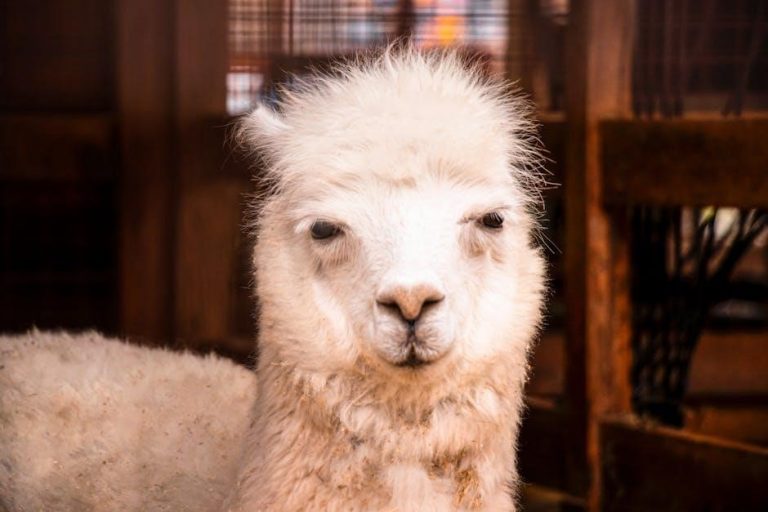Understanding Alpaca Wool
Alpaca wool is renowned for its natural softness, warmth, and lightweight properties, making it ideal for garments. Its durability and water-repellent qualities simplify care, ensuring long-lasting quality with proper washing techniques.
Properties of Alpaca Wool
Alpaca wool is naturally soft, lightweight, and warm, with excellent thermal insulation properties. It is water-repellent and highly durable, resisting wear and tear effectively. Unlike other wools, it contains no lanolin, making it hypoallergenic and easier to clean. Alpaca fibers are smooth and lack scales, reducing the risk of felting during washing. Its natural crimp allows for airflow, keeping garments breathable. These properties make alpaca wool ideal for delicate washing methods, as it retains its shape and softness when properly cared for. Its resistance to pilling and ability to wick moisture further enhance its appeal for high-quality textiles.
Benefits of Alpaca Wool
Alpaca wool offers numerous benefits, including exceptional softness, warmth, and lightweight comfort. Its hypoallergenic properties make it ideal for sensitive skin. The natural water-repellency and durability of alpaca wool ensure garments last longer with minimal pilling. It is also resistant to odors and moisture, reducing the need for frequent washing. Additionally, alpaca wool is eco-friendly, as it is biodegradable and sustainably sourced. These qualities make it a preferred choice for high-quality, long-lasting textiles that require gentle care, ensuring they remain soft and vibrant for years to come.
Preparation for Washing
Sort alpaca wool garments by color and place them in a laundry bag to protect fibers. Use a mild, wool-specific detergent to preserve softness and texture.
Sorting and Color Separation
Sorting alpaca wool garments by color prevents dye transfer during washing. Separate darks from lights to avoid discoloration. Place each garment in a laundry bag to protect fibers. Washing similar fabrics together reduces friction and pilling. This step ensures gentle cleaning and maintains the softness of alpaca wool. Proper sorting prevents damage and extends the life of your garments.
Using a Laundry Bag
Using a laundry bag is essential for protecting alpaca wool during washing. The bag prevents snagging and pilling caused by friction and mechanical stress. Place each garment in a separate bag to ensure gentle movement during cycles. This method is especially recommended for delicate or hand-washed items. Protecting alpaca wool in a laundry bag ensures it remains soft and intact after washing. It’s a simple yet effective step to preserve the quality and longevity of your alpaca wool garments.
Choosing the Right Detergent
Choosing the right detergent is crucial for washing alpaca wool. Use a mild, gentle detergent specifically designed for wool or delicate fabrics. Avoid harsh chemicals, bleach, or enzyme-based detergents, as they can damage the fibers. Opt for a detergent that is pH-balanced and free from abrasive additives. For machine washing, select a wool-specific detergent to preserve the natural oils and softness of the alpaca wool. Always check the label to ensure the detergent is suitable for delicate or natural fibers, as this will help maintain the quality and longevity of your alpaca wool garments.
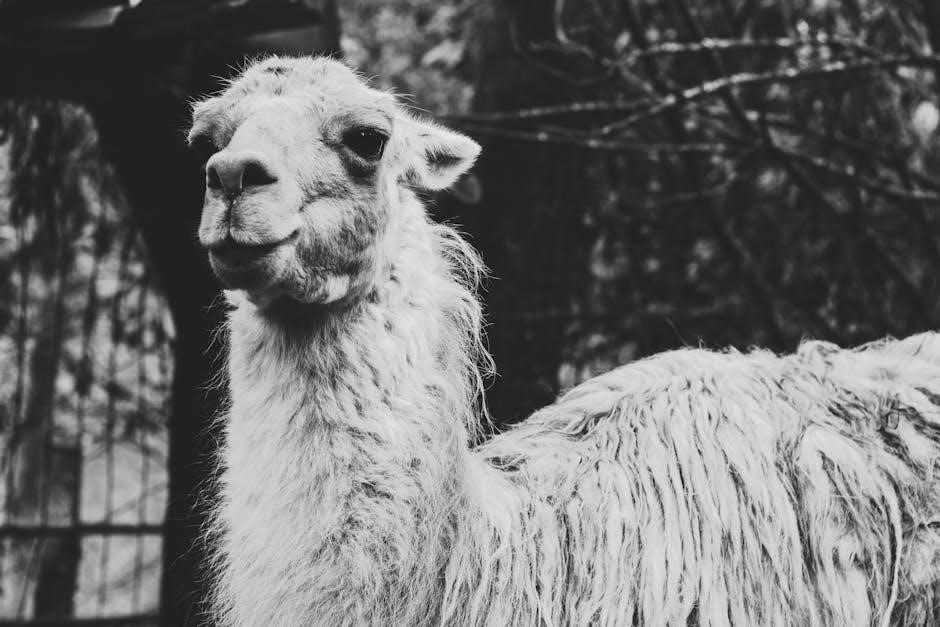
Hand Washing Instructions
Submerge the alpaca wool garment in cold water with a mild detergent, gently massage, and rinse thoroughly before laying flat to dry. Avoid excessive agitation to preserve texture.
Filling the Basin with Cold Water
Filling the basin with cold water is the first step in hand washing alpaca wool. Use water at a temperature between 10°C and 20°C (50°F to 68°F) to prevent felting or shrinkage. Ensure the water is cool but not icy, as extreme cold can stiffen the fibers. Add enough water to fully submerge the garment, creating a gentle soak. Avoid hot water, as it can damage the natural oils and texture of the wool. This step ensures the fibers remain soft and intact, maintaining the quality of the alpaca wool. Always use a clean basin to prevent contamination.
Adding Mild Detergent
Use a small amount of mild detergent specifically designed for wool to avoid damaging the alpaca fibers. Add about a teaspoon of detergent to the cold water before soaking the garment. Avoid biological or enzyme-based detergents, as they can break down the natural fibers. Gently mix the detergent into the water until it’s fully dissolved, ensuring an even distribution. Do not agitate the water excessively, as this can cause pilling or felting. This step ensures the wool is cleaned without stripping its natural oils, preserving its softness and texture. Always opt for detergents labeled as safe for wool or alpaca fibers.
Soaking the Garment
Submerge the alpaca wool garment in cold or lukewarm water, ensuring it is fully covered. Allow it to soak for 15–30 minutes to loosen dirt and oils. Avoid agitation during soaking, as this can cause felting or pilling. Gently press the fabric underwater if necessary, but do not wring or twist. The soaking step helps maintain the wool’s natural texture and prevents shrinkage. After soaking, proceed to gentle agitation or rinsing without draining the water excessively. This method ensures the fibers remain intact and the garment retains its softness and shape. Soaking is a crucial step in the hand-washing process for alpaca wool care.
Gentle Agitation and Rinsing
Gently agitate the alpaca wool garment using your fingertips in a soft, massaging motion. Avoid wringing, twisting, or scrubbing, as this can cause felting or pilling. After soaking, rinse thoroughly under cold running water until the water runs clear, ensuring all detergent is removed. Repeat if necessary. Do not wring the garment; instead, gently squeeze out excess water. This step is crucial to maintain the natural texture and drape of the wool. Proper rinsing prevents residual detergent from damaging the fibers over time. Gentle agitation and rinsing ensure the garment remains soft and retains its quality.

Machine Washing Instructions
Use a gentle cycle with cold water and a mild detergent. Select the wool or delicate setting on your washing machine to protect the fibers. Avoid overloading the machine, and place the garment in a mesh laundry bag if possible. This ensures minimal agitation and prevents pilling or damage. Always follow the care label instructions for specific guidance, as some alpaca wool blends may require special handling. Proper machine washing preserves the softness and longevity of your alpaca wool garment, maintaining its natural texture and appearance. Regular maintenance ensures it remains a comfortable and durable choice for years to come.
Selecting the Gentle Cycle
When machine washing alpaca wool, selecting the gentle cycle is crucial to preserve its softness and texture. Choose the wool or delicate setting on your washing machine, ensuring cold water is used to prevent shrinkage or damage. A gentle cycle minimizes agitation, reducing the risk of pilling or felting. Place the garment in a mesh laundry bag for added protection. Avoid overloading the machine, as this can cause excessive friction. Always check the care label for specific instructions, as some blends may require special handling. Using the gentle cycle ensures your alpaca wool remains soft, durable, and retains its natural beauty.
Using Cold Water Settings
Cold water is essential for washing alpaca wool to prevent shrinkage and maintain fiber integrity. Use a temperature setting between 10°C and 20°C, avoiding any heat that could damage the wool. Cold water helps preserve the natural oils in the fibers, keeping them soft and resilient. Ensure the washing machine is set to a cold water cycle specifically designed for delicate or woolen items. Avoid using hot water, as it can cause felting or irreversible damage to the fabric. Consistent cold water use ensures your alpaca wool garments remain in excellent condition, retaining their warmth and texture.
Ensuring Low Spin Speed
Low spin speed is crucial when washing alpaca wool to minimize friction and prevent damage. High-speed spinning can cause pilling or felting, ruining the fabric’s softness and texture. When using a washing machine, select the gentle or wool cycle with the lowest spin setting, ideally below 400 RPM. This reduces stress on the fibers, preserving their natural integrity. Always check the machine’s settings to ensure a low spin speed is applied, as excessive spinning can lead to irreversible damage. Proper spin speed maintenance helps extend the lifespan of your alpaca wool garments, keeping them soft and luxurious for years.
Drying Methods
Alpaca wool requires careful drying to maintain its texture. Methods include laying flat, hanging to air dry, and avoiding tumble drying to prevent shrinkage and damage.
Laying Flat to Dry
Laying alpaca wool flat to dry is essential for preserving its shape and texture. Place the garment on a clean, dry towel, reshaping it gently to maintain original dimensions. Avoid hanging, as it may stretch or deform the fabric. Ensure the surface is flat and even, allowing air to circulate evenly around the garment. This method prevents shrinkage and ensures the wool retains its natural softness and warmth. It’s the recommended drying technique for delicate or hand-washed alpaca items, ensuring longevity and maintaining the fabric’s integrity. Proper flat drying is key to extending the life of alpaca wool garments.
Hanging to Air Dry
Hanging alpaca wool garments to air dry is a suitable alternative to laying flat, especially for items like sweaters or socks. Use a sturdy, padded hanger or a breathable drying rack to prevent stretching. Ensure the garment is evenly balanced to maintain its shape. Avoid direct sunlight, as it may cause fading or felting. Opt for a cool, well-ventilated area to promote even drying without moisture buildup. Hanging allows air to circulate freely, reducing the risk of musty odors. This method is ideal for machine-washed alpaca items, though hand-washed pieces may still benefit more from laying flat to dry.
Avoiding Tumble Drying
Tumble drying is not recommended for alpaca wool garments, as high heat and mechanical stress can damage the fibers. Heat causes shrinkage and felting, irreparably altering the fabric’s texture. Additionally, the tumbling action can weaken the fibers, leading to pilling or breaks. To preserve the softness, warmth, and durability of alpaca wool, it’s best to avoid machine drying altogether. Instead, opt for air drying methods, such as laying flat or hanging, to maintain the integrity of the material. This ensures the garment remains in pristine condition and retains its natural qualities for a longer lifespan.
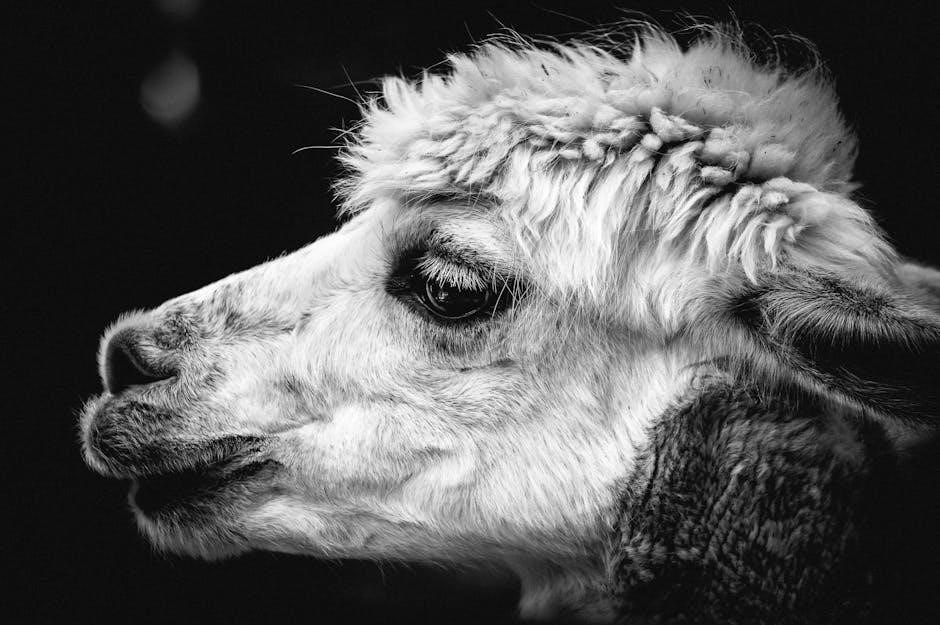
Special Care Tips
Minimize washing cycles to preserve alpaca wool’s natural oils. Avoid harsh chemicals and opt for gentle detergents. Store garments properly to prevent pilling and damage.
Minimizing Wash Cycles
Alpaca wool garments should be washed sparingly to maintain their quality. Over-washing can strip natural oils, leading to dryness and potential damage. Spot cleaning is often sufficient for minor stains. If a full wash is necessary, opt for hand washing in cold water with a mild detergent. Avoid machine washing unless absolutely necessary, and always use a gentle cycle with a laundry bag for protection. Air-drying by laying flat or hanging is recommended to preserve the fabric’s integrity and softness. Regular airing can help maintain freshness without frequent washing.
Avoiding Harsh Chemicals
Harsh chemicals, such as biological detergents or bleach, can damage alpaca wool fibers, causing them to degrade or lose their natural softness. Always use a mild, non-biological detergent specifically designed for washing wool or delicate fabrics. Avoid fabric softeners, as they can leave a residue that affects the wool’s texture and breathability. Instead, opt for gentle cleaning agents that preserve the natural oils and integrity of the fibers. This ensures the wool remains soft, durable, and resistant to pilling over time.
Preventing Pilling
To prevent pilling on alpaca wool garments, gentle washing and handling are essential. Avoid excessive friction during washing, as this can cause fibers to break and tangle. Use a laundry bag to protect the garment during machine washing, and avoid washing it with rough or abrasive fabrics. When hand washing, gently agitate the water without rubbing the fabric. After washing, lay the garment flat to dry, as hanging can stretch the fibers and lead to pilling. Regularly brushing the garment with a soft brush can also help maintain its texture and prevent fiber tangling.
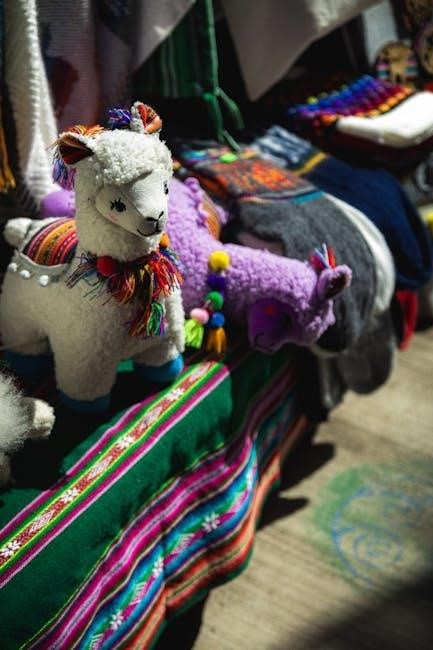
Common Mistakes to Avoid
Using hot water, aggressive washing, and high heat drying can damage alpaca wool fibers, leading to shrinkage, felting, or loss of softness. Avoid these practices to preserve quality.
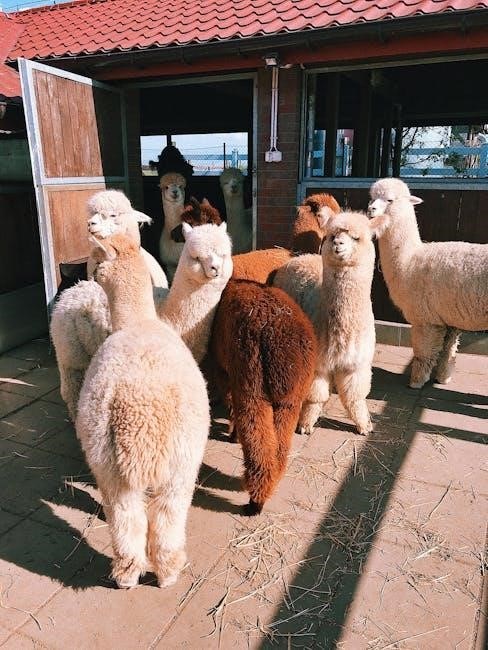
Using Hot Water
Using hot water is a common mistake when washing alpaca wool. Hot water can cause felting, shrinkage, and damage to the delicate fibers. It breaks down the natural oils and disrupts the wool’s structure, leading to a rough texture. Instead, always use cold or cool water to preserve the softness and integrity of the fabric. Hot water can also cause colors to bleed or fade, especially in dyed alpaca wool. To maintain the quality and longevity of your alpaca wool garments, stick to cold water and gentle washing methods.
Aggressive Washing
Aggressive washing, such as scrubbing or wringing, can severely damage alpaca wool fibers. The friction causes pilling and weakens the fabric’s structure, leading to a rough texture and reduced durability. Gentle agitation is essential to preserve the softness and integrity of the wool. Avoid rubbing or twisting the garment, as this can stretch or break the fibers. Instead, use a gentle swishing motion in cold water to clean the fabric without causing harm. Aggressive methods not only ruin the appearance but also shorten the lifespan of your alpaca wool garments.
High Heat Drying
High heat drying can severely damage alpaca wool, causing it to shrink, felt, or lose its softness. Heat breaks down the natural fibers, leading to brittleness and breakage. Alpaca wool should never be exposed to high temperatures, as it can irreparably harm the fabric’s texture and appearance. Instead, opt for air drying by laying the garment flat or hanging it to ensure even drying without heat. This preserves the wool’s natural properties and maintains its longevity. High heat drying is one of the most common mistakes that can ruin the quality of alpaca wool garments.
Sustainability and Alpaca Wool
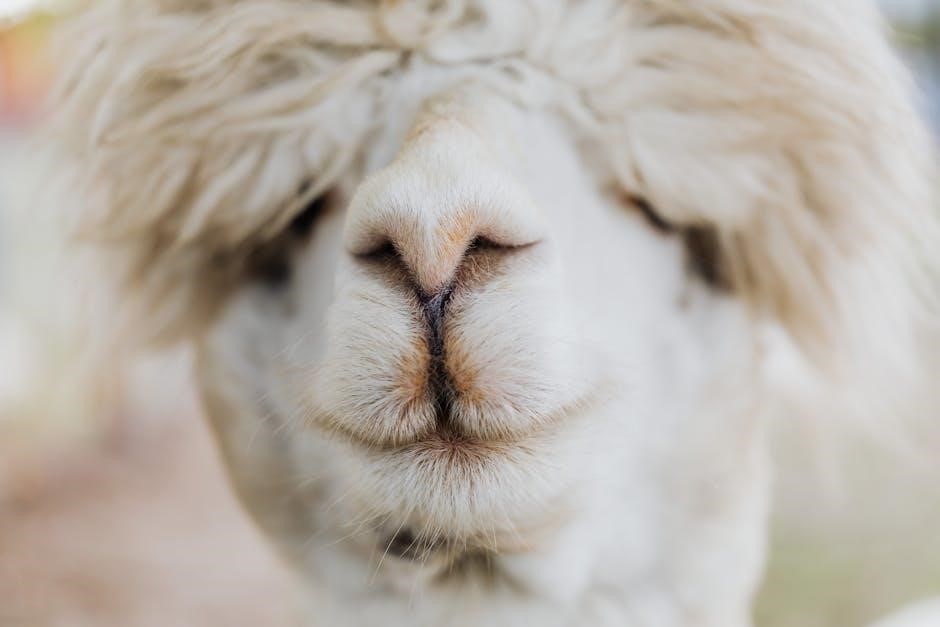
Alpaca wool is eco-friendly as it biodegrades easily and requires minimal washing, reducing water and detergent use. Eco-conscious practices like air drying further lessen environmental impact.
Eco-Friendly Washing Practices
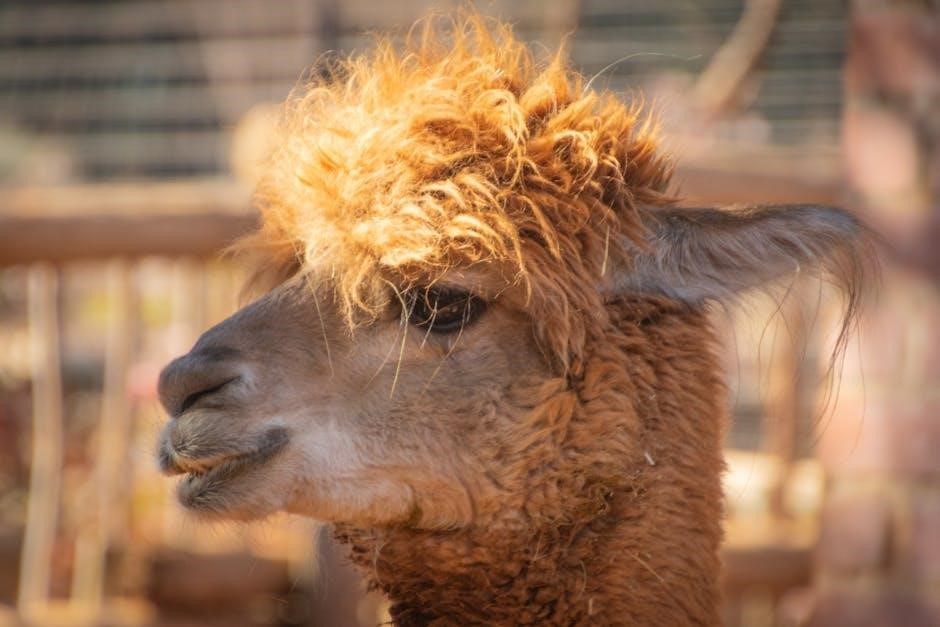
Washing alpaca wool in an eco-friendly manner involves using cold water, minimal detergent, and gentle cycles to reduce environmental impact. Opt for biodegradable detergents free from harsh chemicals. Minimizing wash cycles preserves the garment while lowering water and energy use. Air drying instead of machine drying further reduces carbon footprint. These practices not only protect the wool’s quality but also contribute to sustainable living by conserving resources and avoiding harmful emissions. Eco-conscious care ensures alpaca wool remains a sustainable choice for environmentally aware consumers.
Reducing Environmental Impact
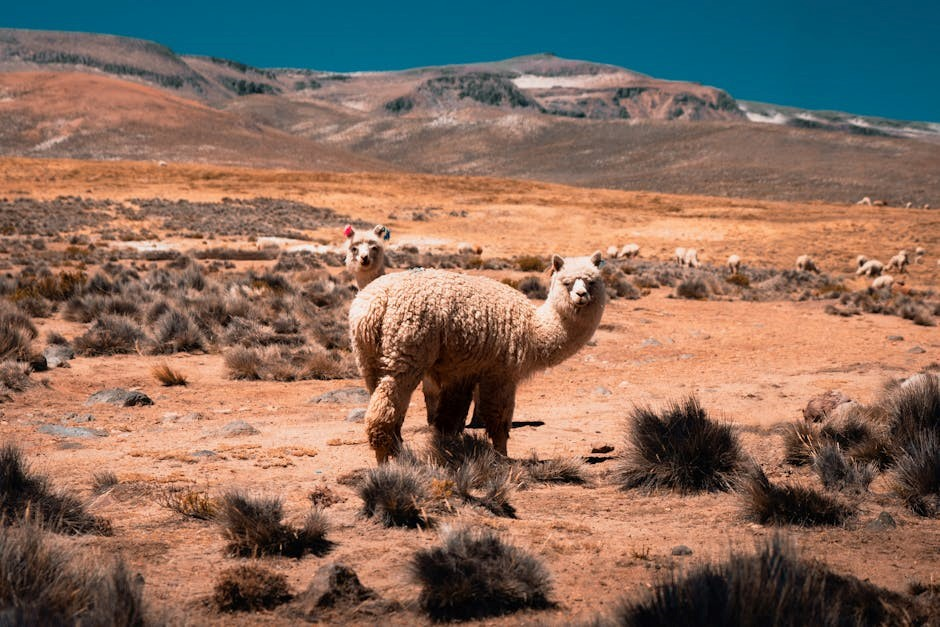
Washing alpaca wool with eco-conscious practices significantly reduces its environmental footprint. Using cold water and minimal detergent reduces energy consumption and prevents chemical runoff. Opting for biodegradable detergents ensures fewer harmful substances enter water systems. Minimizing wash cycles preserves the garment’s quality while conserving water and energy. Air drying instead of machine drying further lowers energy use. These sustainable practices not only protect the wool’s integrity but also contribute to a greener planet by reducing overall resource consumption and emissions. By adopting these methods, consumers can enjoy alpaca wool while supporting environmentally responsible care routines.
Care Symbols and Labels
Care symbols guide proper washing and maintenance. A hand wash symbol or gentle cycle icon indicates alpaca wool needs delicate care. Cold water and low spin settings are essential.
Understanding Washing Symbols
Washing symbols provide clear guidance for cleaning alpaca wool garments. The hand wash symbol, a tub with hands, indicates gentle hand washing is recommended. A machine wash symbol with a gentle or wool cycle suggests using a low-spin, cold-water setting; A water temperature symbol, often a number or dots, specifies maximum heat tolerance. Alpaca wool typically requires cold water, represented by a snowflake or single dot. Adhering to these symbols ensures proper care, preventing shrinkage, color fading, or fabric damage. Always check labels for specific instructions to maintain the quality and longevity of your alpaca wool items.
Interpreting Drying Symbols
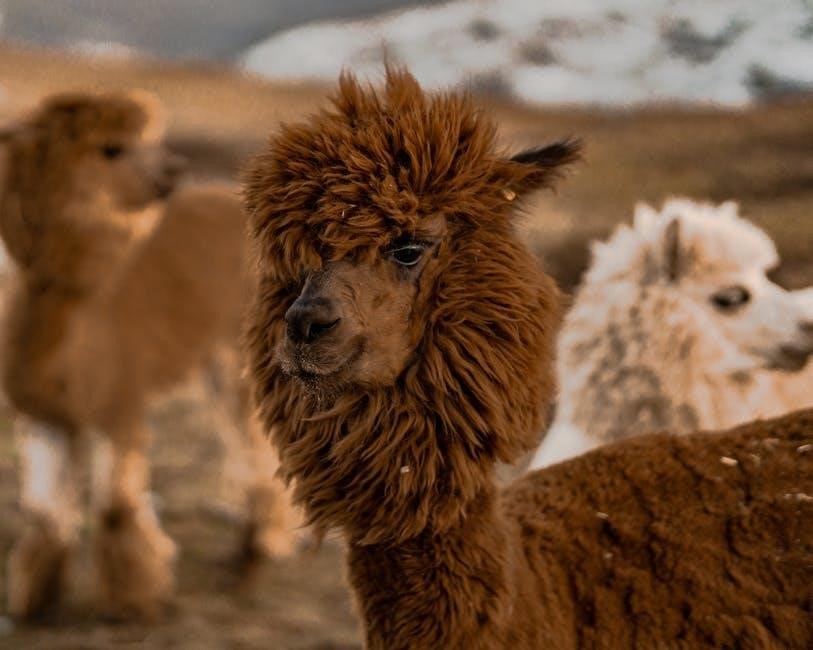
Drying symbols guide how to properly dry alpaca wool garments. A square with a horizontal line indicates drying flat, while a circle with a dot suggests air drying. An “X” over a tumble dryer means no machine drying, crucial for preserving alpaca wool’s texture. A sun symbol with a line underneath advises against direct sunlight to prevent fading. These symbols ensure alpaca wool retains its softness and shape. Always follow care labels to avoid shrinkage or damage, as improper drying can harm the fabric. Proper drying practices are essential for maintaining the longevity and quality of alpaca wool items.
Always use cold water and gentle detergents when washing alpaca wool. Avoid machine drying to preserve softness and durability, ensuring longevity of your garments.
Wash alpaca wool in cold water with a mild, non-biological detergent to preserve its softness and durability. Hand washing is recommended for delicate items, while machine washing on a gentle cycle with a laundry bag is suitable for sturdier garments. Always wash similar colors together to prevent dye transfer. Gently agitate the water and avoid soaking for extended periods. Rinse thoroughly and lay the garment flat to air dry, avoiding direct sunlight. Minimize washing cycles to maintain quality, and avoid harsh chemicals or high heat, which can damage the fibers. Proper care ensures longevity and retains the natural beauty of alpaca wool.
Longevity of Alpaca Wool Garments
Alpaca wool garments are known for their exceptional durability and longevity when properly cared for. Regular washing in cold water with mild detergents prevents damage to the fibers, ensuring softness and warmth are retained. Avoiding machine washing unless on a gentle cycle and using laundry bags helps preserve their quality; Drying flat or hanging prevents shrinkage and maintains shape. Minimizing wash cycles and avoiding harsh chemicals further extend the life of alpaca wool items. By following these care practices, alpaca wool garments remain soft, vibrant, and durable for years, making them a sustainable and long-lasting choice.
